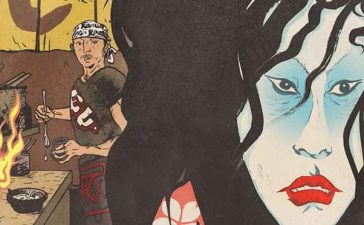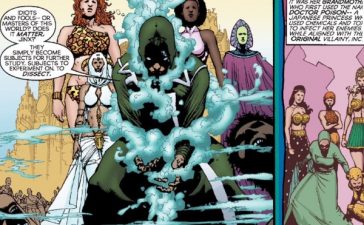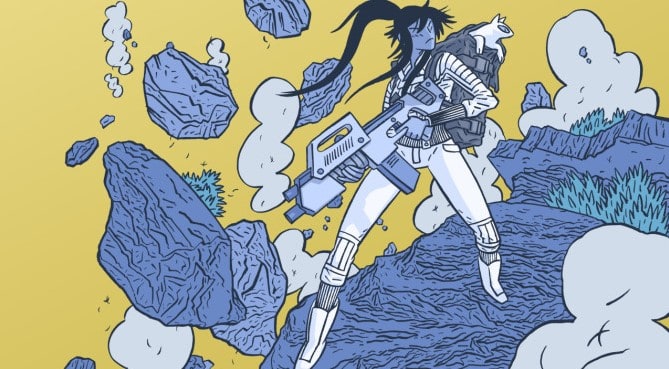
Advance Review of ApocalyptiGirl
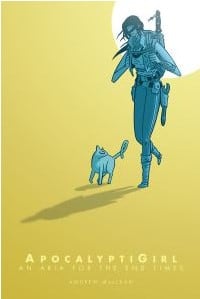
By Andrew MacLean
Andrew MacLean’s new graphic novel ApocalyptiGirl: An Aria for the End Times takes a familiar setting and revives it with fresh energy. The story centers on a woman named Aria, who lives in the ruins of a large city. The advanced civilization which built it is gone, decimated by their violent greed. They squandered every second chance until all that remains is desolation. Now primitive tribes (The Blue Stripes and Grey Beards) continue their legacy not by rebuilding society but by savagely fighting over what habitable land remains. “The life of man [when at war is] solitary, poore, nasty, brutish, and short” declared Thomas Hobbes over 350 years ago. At times, MacLean’s book does little to debunk Hobbes’ pessimism.
Aria lives without any human companions, though she does occasionally cross paths with others, primarily a group of Blue Stripes. These exchanges are entirely defined by violence. The Blue Stripes tongue is unfamiliar to Aria; the closest she comes to negotiation is threatening with her weapon. Aria has no illusions about the world she lives in, knowing that she must kill or be killed, even when it comes to dogs, which are probably simply trying to please their masters. Aria is a skilled combatant, quite adapt with a sword. In addition, she has access to weapon technology superior to the more primitive models possessed by the tribes. MacLean lends Aria’s movements a touch of grace, but never loses sight of the brutality of the violence. It often comes in sharp, rapid bursts, leaving the victor soaked in blood. MacLean is able to render these sequences dynamically without obscuring the harsh truths of combat.
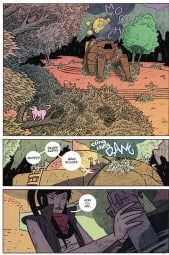
While all this may make ApocalyptiGirl sound rather bleak, it is only one strand of the story. The other focuses on Aria’s daily life. Aria has carved out for herself a little bit of civilization amongst the urban wreckage. An abandoned subway car has been converted into a home complete with running water for a shower. It is a nice demonstration of Aria’s resourcefulness, which also helps lighten the mood from all the outside desolation. Also helping keep up her spirits is a white cat named Jelly Beans. Jelly Beans is almost always at Aria’s side as she goes about her routine. MacLean does a fantastic job rendering the cat’s personality, capturing its mix of aloofness and loyalty. Despite all the devastation of humans cats keep on being cats. In such a way, MacLean is able to balance light-hearted scenes of Aria and Jelly Beans with the grimmer sequences of combat. The result is a rich variety of tones.
In the end, however, MacLean is able to knit these two threads together. Aria is living amidst this wreckage of civilization for a reason; she has a specific task to perform. The precise nature of this mission is not explained until late in the narrative, so I shall keep quiet about it here. What I shall say is that it presents Aria an opportunity to judge the warring remnants of society. How MacLean handles this sequence is quite skillful, especially if you are an animal lover. It contains a panel of Jelly Bean which is quite poignant, almost the essence of cats. It cannot help but make the reader the smile.
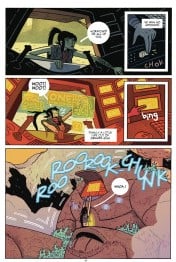
Throughout, MacLean’s art is equal to his ability as a writer. His loose style is a good fit for the story, equally suited to the charming character moments and the brutal violence. In each case, it allows the emotions of the scene to shine through clearly. Needless to say, he also draws an adorable feline. Altogether this is an enjoyable graphic novel with a timely message about natural resources, community, forgiveness, and, yes, cats. Mixing all these elements together, MacLean has produced a narrative which rises above the clichés of the genre.






